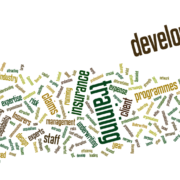Portfolio Management – a core insurance skill
What is Portfolio Management?
Ask any commentator on the General Insurance market – what are the core disciplines in insurance or what is at the centre of successful insurance companies? – and they will say underwriting, claims handling and risk management, and maybe then add pricing and customer focus.
Our view is that portfolio management needs to be in that list too.
Underwriting involves the assessment, pricing and acceptance of individual risks. Given free rein an underwriter will build a portfolio of individual risks reflecting his/her decisions, availability in the market place, competitiveness and chosen distribution channel. That scenario assumes a new start-up, whereas reality usually involves an existing account which the underwriter adds to the account through new business and maintains or reduces through renewal re-underwriting – i.e. through retention or lapsing of existing business.
Successful insurers do more than underwriting though – they actively and positively manage their books of business – what is usually called portfolio management.
Different organisations adopt different ways to segment their business into manageable chunks – one or more of attributes such as size and complexity of customer, customer needs, distribution channel, line of business, risk type, geography, exposure, etc. They use different terminology too for the role that has responsibility for managing each segment/book of business/portfolio – e.g. segment leader, P&L Leader, Underwriting Officer or Portfolio Manager.
But no matter the job title – the essence of the role is to have a really good understanding of how their portfolio is performing and how it might perform going forward. They have a common purpose which is to manage their portfolio proactively to ensure delivery of the business result – if they are not actively managing their portfolio they have no direct influence on its profitability, rather they are in the hands of the individual decisions of the underwriter and the vagaries of the greater insurance market. Put that way – that seems a pretty scary prospect and one can begin to see the critical importance of the portfolio manager and the veracity of the contention that portfolio management is a core insurance discipline.
So what does a portfolio manager need to manage? It’s a long and comprehensive list:-
- Strategy and planning
- Appetite
- Risk selection
- Technical pricing
- Product development
- Distribution strategy
- Underwriter capability
- Exposure control
- Reinsurance
- Accumulation management
- Risk Engineering/Loss control
- Claims trends, processes and initiatives
- Technical reserves
- Control and risk environment
- Results monitoring
- Data quality
- External forces from the insurance market and/or wider environment.
What are the key attributes of a successful portfolio manager?
The list above demonstrates that the breadth and scope of portfolio management involves virtually every insurance function and the need is for an integrated approach. The portfolio manager cannot be an expert in every area of the business and therefore has to be able to collaborate with, influence, negotiate with, and manage many stakeholders to ensure all interested functions are involved in working together to support the success of the portfolio. The portfolio manager has to have a good working knowledge of every function that interacts and supports the achievement of the strategy. For example they need to know enough about reserving to enable them to attend and contribute to reserving meetings and challenge the actuaries if required. Similarly, knowledge of the insurer’s distribution strategy and impact on the portfolio is a pre-requisite with the ability to influence the manager or management team primarily responsible for this function. And of course proactivity in collaborating and working with other functions beats being reactive.
Portfolio managers have to be good communicators – they need to be able to listen and digest input from all related functions such as claims, reinsurance and pricing, as well as being able to articulate clearly their portfolio strategy and results to the wider portfolio team and business leaders.
Customers should be at the centre of their thinking and a key element here is the understanding of their market, their competitors and their customers’ needs to ensure that the portfolio strategy, product design and proposition reflects these.
They have to be numerate, know their numbers and have an ability to understand and interpret data and spot trends. They have to understand all their Key Performance Indicators, both leading and lag indicators and use this knowledge to drive actions and make use of the various levers they can pull to influence the performance of their portfolio.
Finally there is the overriding requirement for general knowledge, interest in the wider environment and need to constantly ask (and answer) the question – “How could this change in the world present an opportunity, or alternatively a risk, to my portfolio?”
The Challenge
So in conclusion – this is demanding stuff, leading to some challenging questions to address – for individual portfolio practitioners, for insurers and for the insurance industry as a whole:-
- Do we have people with the relevant skills and experience in these roles?
- Do people with such skills “grow on trees”?
- Does an excellent case underwriter make a good portfolio manager?
- How do we develop such skill sets in our portfolio managers?
- Do we value these portfolio manager skills highly enough?
- Are our portfolio managers “of an age” and are we investing in succession plans and their successors?
How we can help
At MAP Training we have a team with extensive experience of managing insurance portfolios combined with expertise in designing and delivering portfolio management training. We have a track record of uplifting the skills of both portfolio managers and their colleagues in other functions who are key to their portfolio success. All our training programmes are based on cases studies and practical situations – this being really the only effective way to learn about portfolio management and to embed the learning in the individual to take back to the workplace.
If you have just a few or many individuals within your organisation who could benefit from a portfolio management programme tailored specifically to your business needs, or you want to discuss in any way, please do get in touch.











Leave a Reply
Want to join the discussion?Feel free to contribute!